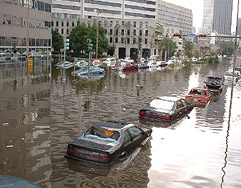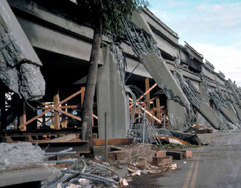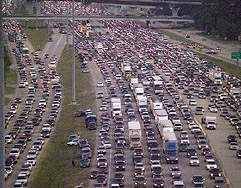Construction sites have stringent safety protocols in place to prevent adverse events and accidents. Even with all the precautions and preventive procedures, fatal injury rate for the industry is quite high. This can be attributed to a number of reasons ranging from oversight on part of site managers to malfunctioning equipment. Another probable cause is the sheer size of the industry where at any given day more than 6.5 million people are at work at work sites numbering an approximate 252,000.
Cranes cause significant and serious injuries if they are not inspected and checked before use for defects. Fatal injuries can occur if an untrained person operates a crane or if the crane is not used properly. There are several recommendations put forth by Occupational Safety and Health Administration (OSHA) that try to mitigate worker safety issues while using a crane.
Tower and mobile cranes are most commonly used in construction sites. Here are a few things that you need to know in order to avoid accidents in your work site.
- How Do Injuries Occur?
Grievous injuries occur both on and off-site when a crane collapses or when a worker is struck by overhead load. Accidents and fatal injuries also occur when a worker comes in way of a crane’s swing radius, cranes come in contact with a power line or conductor, or when cranes collide with each other.
All of these present possibilities of multiple injuries and fatalities.
Ill-planned and ill-executed crane operations cause delay and obstructions at the construction site, and also cause accidents.
Ensure you follow safety rules and adhere to user instructions. Being scrupulous about adhering to safety rules is the best thing you can do to avoid worksite accidents.
- Plan Well
Crane operations need to be planned in advance to avoid mishaps. A trained and experienced person has to evaluate the site conditions and address the risks present. Crane operator and other crew members must be aware of potential hazards in the worksite and other unusual operating conditions. The required resources, procedures to be followed and responsibilities of personnel need to be worked out.
Lifting equipment including slings and other accessories should of adequate strength to carry out the operations. They should be tested and inspected for quality. They have to remain safe for the entire range of jobs and period of operations.
- Follow Safe Work Protocols
It is important to check crane controls and signaling arrangements before commencing work. Wire ropes, chains, hooks and all rigging systems should be checked for strength and efficacy. The load being lifted should not exceed the rated capacity for the make and model of your crane and lifting equipment.
Failure of brake systems is another reason behind work site accidents involving cranes. Raise the load a bit and check the effectiveness of the brake system before launching operations.
Properly trained and competent personnel should operate the crane. They must have prior experience handling similar job role and responsibilities.
Cranes should not be operated without approval of a higher authority. Also there should be a competent authority supervising crane operations who can signal the user if anything goes wrong.
- Evaluate the Ground Conditions
Many incidents occur at work sites when cranes tip over due to poor or unstable ground conditions.
In addition to ground anomalies a range of other factors also result in cranes tipping over. The outriggers of mobile cranes need to be fully extended or as specified by the manufacturer. When this is not done cranes tip over.
Insufficient counter weights and wind also cause accidents. Another cause behind cranes tipping over is wrongly calculated loads that exceed crane capacity.
Ensure that cranes operate under optimal conditions to avoid worker injuries and fatalities.
- Maintain a Safety Zone
If possible, it is recommended to maintain a barricaded safety zone to prevent entry of unauthorized people into the lift area. People, structures and other equipment that come in the crane’s swing radius cause accidents and worker injuries. Such incidents occur when the path of the load is not clearly planned and when cranes operate in crowded or high traffic areas.
- Carry out Inspections Regularly
OSHA publishes safety and regulatory rules that need to be followed when operating cranes at construction sites.
Inspections have to be carried out on shift, monthly and annual basis for crane equipment and wire ropes. Post-assembly inspections are mandatory to ensure that cranes are in optimal working condition. Pre-erection inspection is necessary for tower cranes. Four-year inspections for key components like vessel or floatation device is also recommended by OSHA.
Safety and reliability of crane operations depend as much on the user as on the crane hirer. When a crane is hired, planning, supervising and operating responsibilities fall on the user, unless explicitly expressed otherwise.
Conclusion
Safety and security of crane operations depend on a number of factors. It is important to ensure that crane equipment and accessories are maintained well. If you follow the cranes standard set by OSHA, you will be able to reduce accidents at work site drastically.
Author Bio:
Rachel Oliver is a freelancer and currently associated with the DGCRANE. She likes to write about anything and everything under the sun, but themes like construction and maintenance and materials handling interest her most. You can get in touch with her on Google+, Facebook, and Twitter.
Tags: Construction, Cranes, DGCRANE, Rachel Oliver, safety






 RSS Feed
RSS Feed